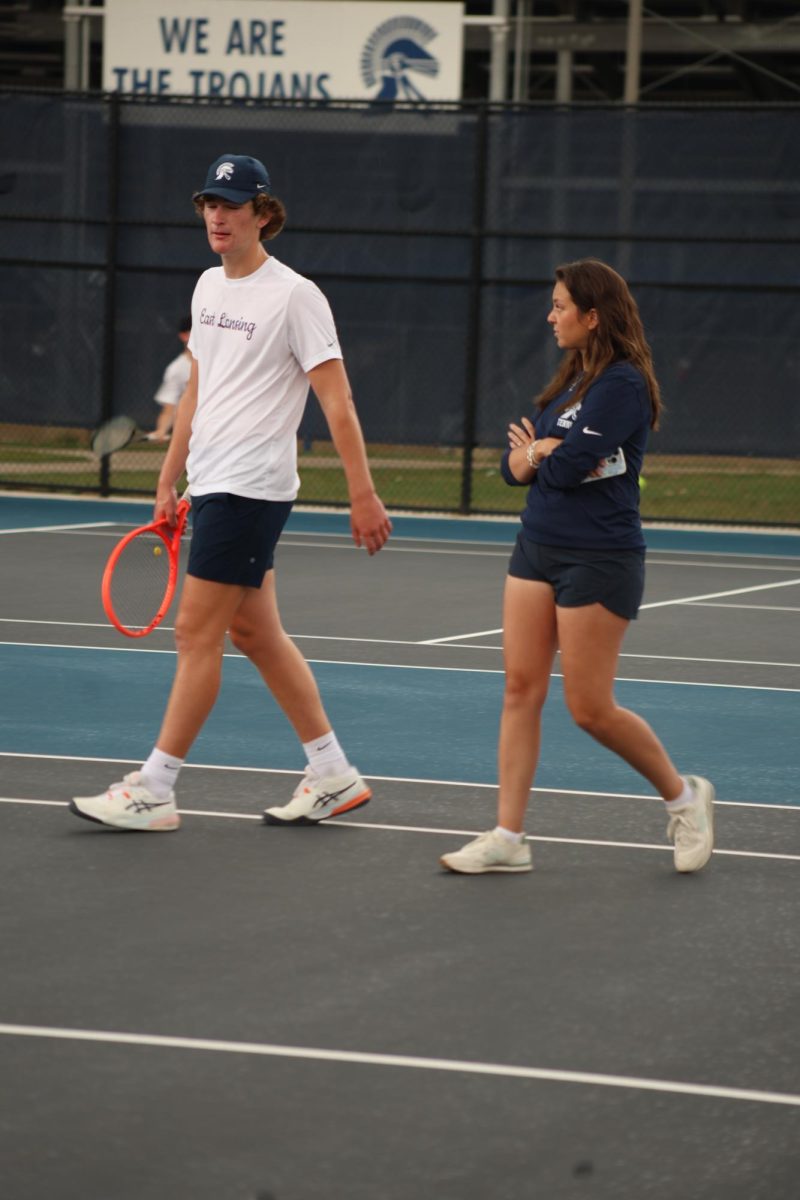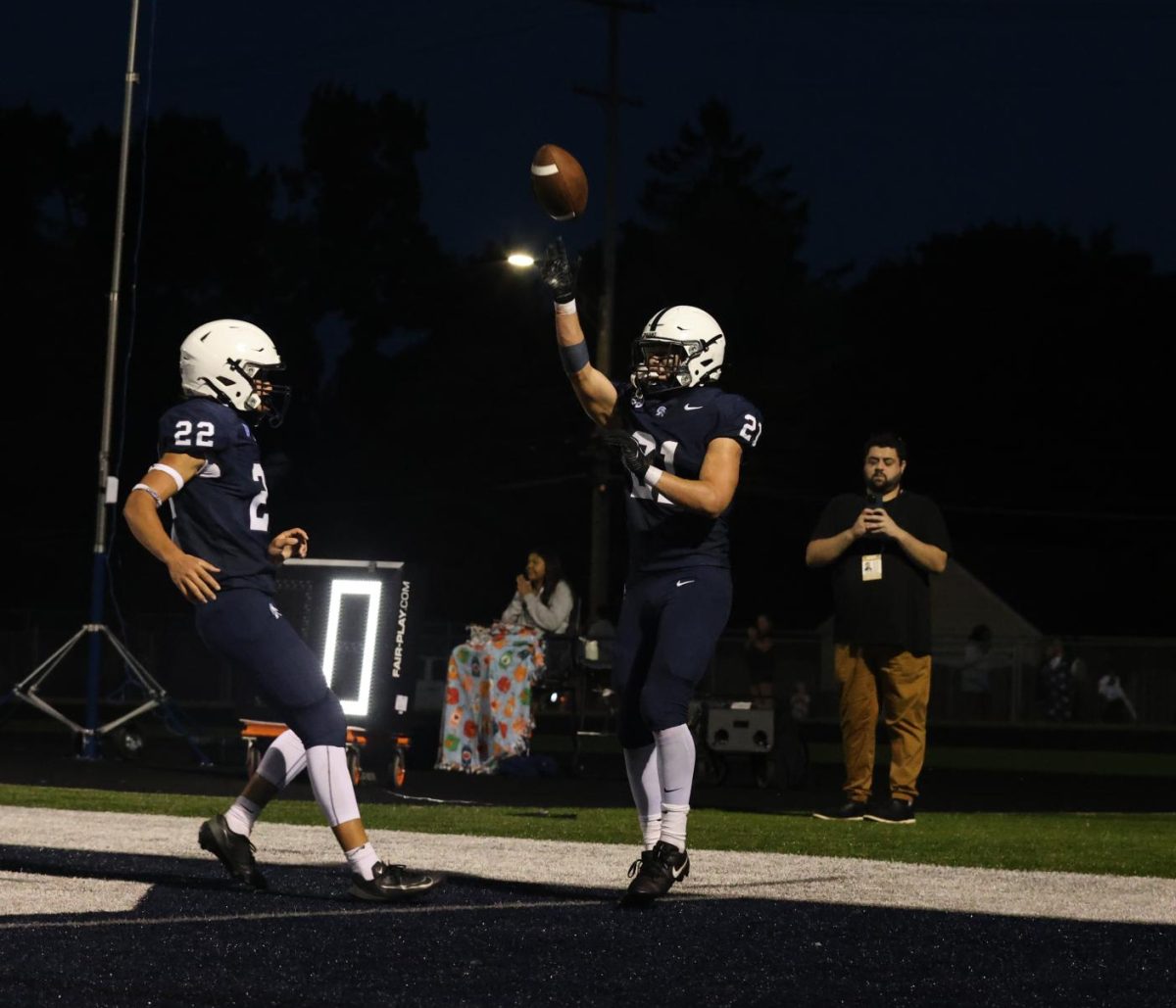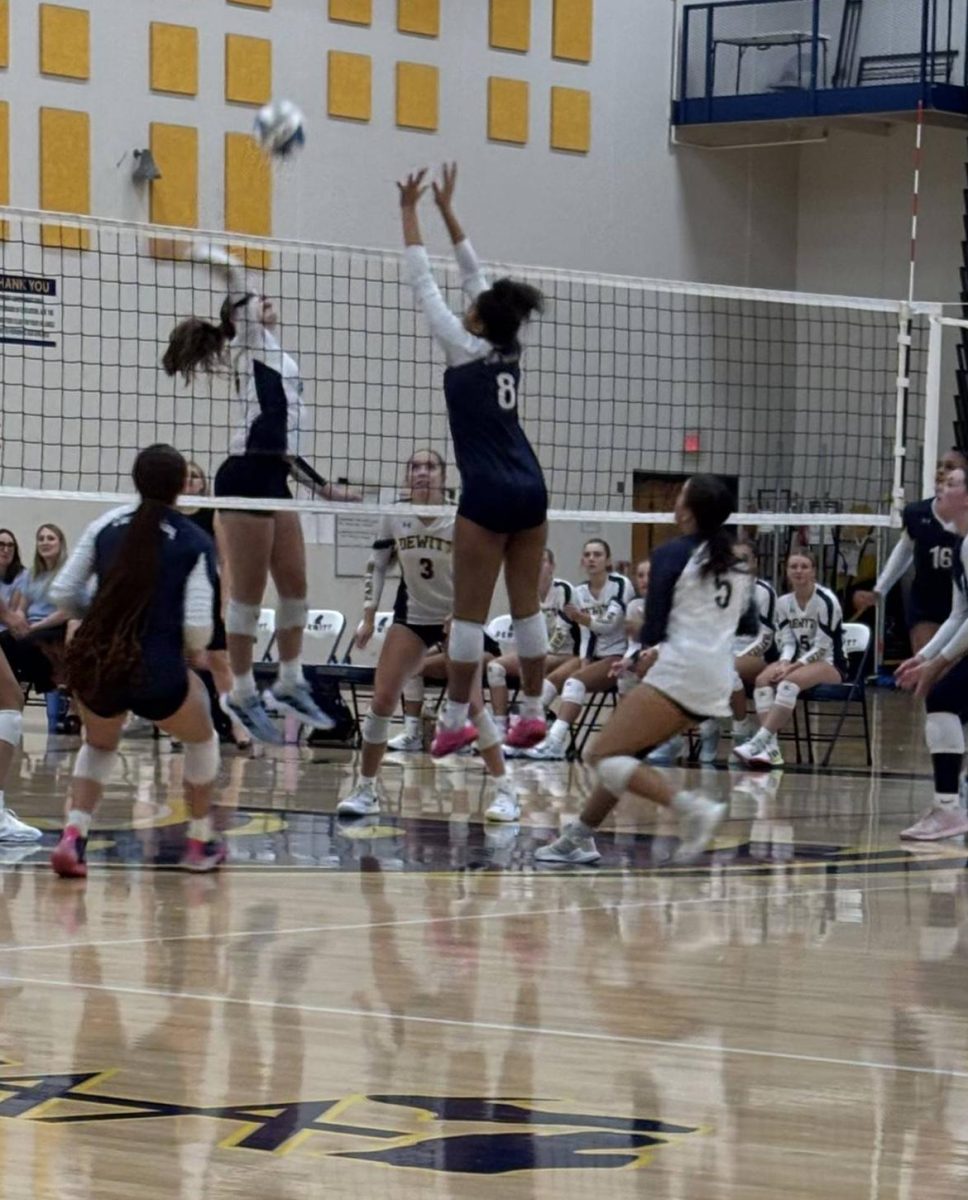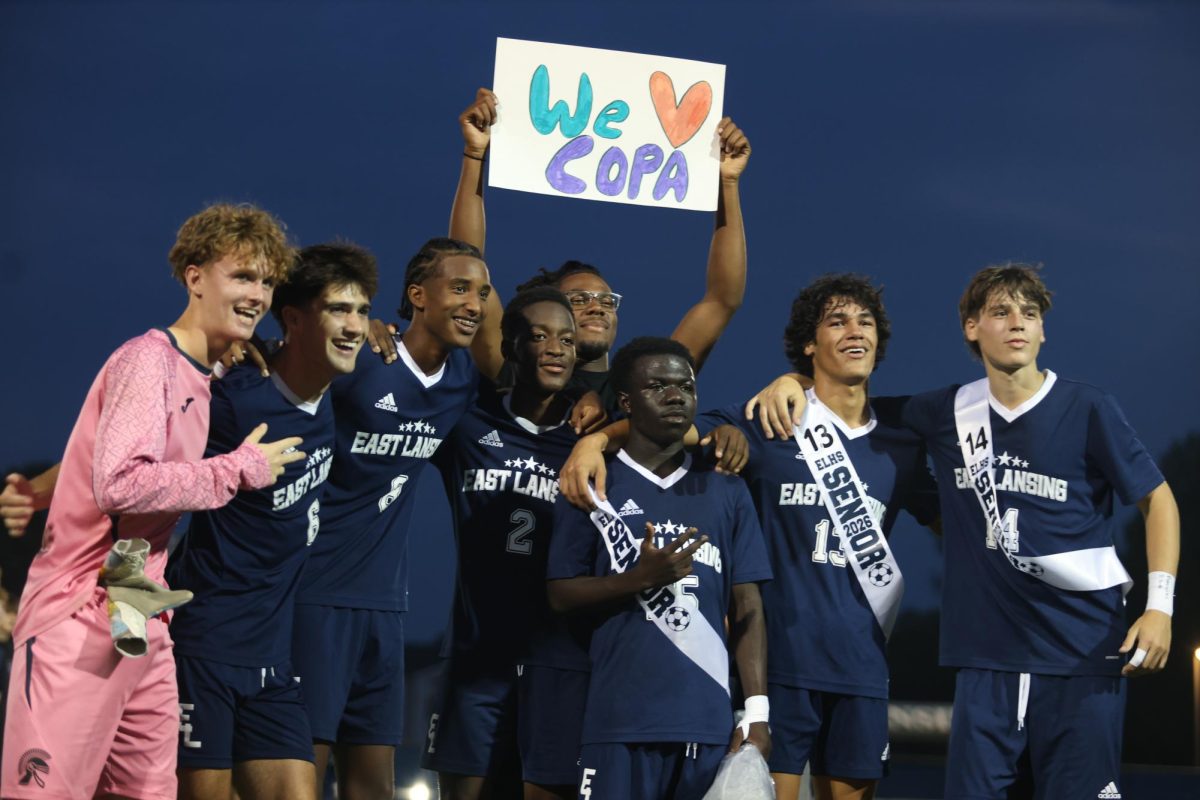In her ten years as a swimmer, Sarah Bergdolt (12) loved how swimming made her feel and the connections swimming surrounded her with. Boys and girls swimming was combined for her at a young age. But when she got to high school, the seasons were defined by the MHSAA calendar.
“When you’re in middle school, and boys and girls swimming is combined, it’s kind of fun because you’re at the same maturity and height so you kind of have similar times,” Bergdolt said. “I remember competing with the boys and being faster than them and the boys would be like ‘oh you’re up against Sarah so you better go fast’.”
But as Bergdolt got closer to high school, she noticed the boys started to pass her. She had to reset her mind.
“They’re gonna go faster than you just because they can, which sucks, but it’s just the way it is,” Bergdolt said.
Swimmer Katherine Aupperlee (10) also feels discouraged at times when compared to her male counterparts. It can be frustrating knowing that this comparison is out of her control.
“No matter how hard I work there will always be a man who can do it better than me with less effort,” Aupperlee said. “It’s really upsetting, but I have to acknowledge that I am trying and I am working and that means something, even if other people can do better than me.”
Aupperlee also feels like men’s sports are generally much more valued in society than women’s sports. Even at the local level, boys receive more turnout than the girls teams. Without actively trying to, it’s common for students to interact more with men’s games, even if the sports are entirely comparable.
“There’s so many amazing things that women have done and they’re just kind of ignored because there’s a man doing something different or better,” Aupperlee said. “I think that generally, women versus men’s sports is a reflection of how we treat women and men in society.”
For Nicole Norris, the high school’s Athletic Director, being submerged in these differences gives her perspective on a much grander scale. Norris was immersed in the world of athletics since childhood. She grew up participating in sports and competing with her older brother and his friends.
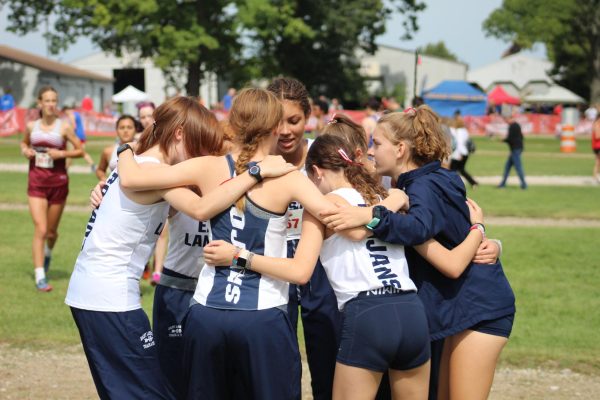
“They did not take it easy on me,” Norris said. “They beat up on me a lot, which probably helped me. But I remember being very frustrated, for example, in a backyard pickup football game and I couldn’t do what they could do. I wished I could have been faster and stronger and been able to jump higher. But I think I outgrew that frustration and just learned to value what I could do.”
The more Norris looked, the more the inequities became obvious. She participated in collegiate track and now has a daughter that plays volleyball at Michigan State University. She has experience coaching, refereeing and now many years as an athletic director.
“It wasn’t even till the 70s when women’s sports were even recognized by the NCAA,” Norris said. “I literally know women that fought when they were at MSU to get uniforms and buses and just the opportunity to represent their school. These things aren’t as long ago as you would think.”
Still today, it’s hard to find equal representation within womens sports. In professional basketball, one of the only sports where there is a direct professional mens and womens team, the NBA’s average annual revenue amounts to $9.2 billion. In contrast, the average annual revenue for WNBA is estimated to be $75 million.
Norris, like many high school athletes, has found inspiration in professional athletes like Iowa women’s basketball player, Caitlin Clark.
“She’s one of the greatest basketball players. She’s not one of the greatest women’s basketball players. And that’s something that we shouldn’t have to define, they are great athletes whether they are male or female,” Norris said.
Whether it’s analyzing if the girls or boys should play first in doubleheaders or handling disparities in facilities and locker rooms, Norris has actively been trying to impact society’s precedents on the difference between girls and boys sports. But it’s easier said than done.
“Traditional girls sports just don’t seem to have the following that the traditional boys sports have. I think that’s true in any high school,” Norris said. “So, I would really like to see that increase because [girls] will work just as hard as the boys. I’m not sure how we make that happen, though. I really don’t.”
Norris acknowledged that she wouldn’t be where she is as an athlete or athletic director if it weren’t for the impact of Title IX, a landmark decision that prohibits sex-based discrimination in any school or any other education program. Title IX began to level the playing field for women’s sports. But despite that, she wants to make sure that students are given opportunities because of their accomplishments, not because the law says they have to.
“I really, really hope that we’re not just giving our female student athletes opportunities, but recognizing and honoring the tradition that kind of provided those opportunities,” Norris said.
When Norris first applied for the athletic director position at ELHS, she was one of the only female athletic directors in the district. This is still true today. She was told she would be fine and would fit in because she was “one of the guys.”
“I didn’t know if that was good or bad?” Norris said. “I really would like to be known as a good athletic director who happens to be female, not just someone who is tolerated.”
Throughout her career, she’s had to push to make her voice heard and advocate for women in sports. She wants to be seen not just as a strong woman, but as a capable administrator.
“There’s a tough balance,” Norris said. “You don’t want to be too pushy. But you have to make sure you speak without your voice wavering, I need to make sure everything is right.”
In this day and age, finding motivation to continue pushing and competing in women’s sports, despite feeling less than, can be difficult.
Cross country and track runner Ruby Hatfield (11) finds inspiration to keep going in looking to successful women’s athletes that challenge the boundaries of women’s sports.
“I really look up to Katie Ledecky,” Hatfield said. “She has obviously made a name for herself in the sport. She shows that women can be just as successful and dominant as men’s athletes.”
Senior Carmela Watson has also experienced hardship in running but has found motivation in knowing that she can always look to the girls on her team, as well as her coach.
“It’s important to know that there are people there for you that will help support you and help you push yourself,” Watson said. “Once you realize that, you can do whatever you set your mind to.”




